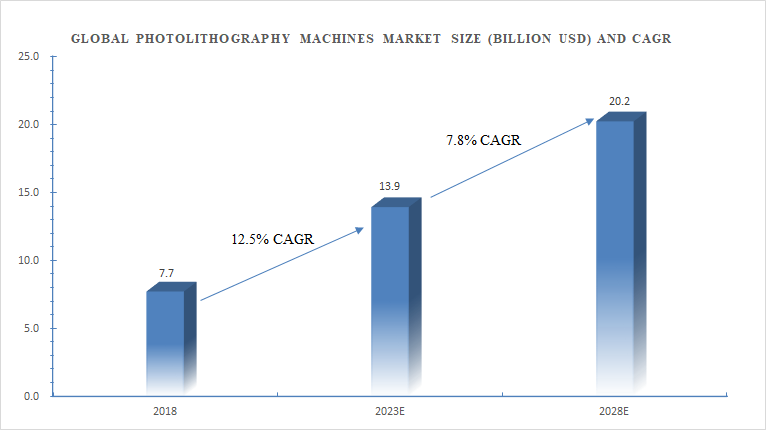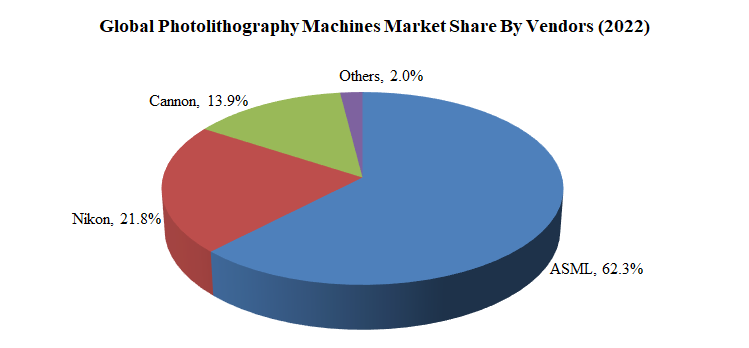Photolithography Machines Producers and Photolithography Machines Market Trend
In recent years, photolithography machines have emerged as the backbone of the integrated circuit manufacturing industry. These sophisticated machines employ techniques reminiscent of traditional photography, utilizing masks to imprint intricate patterns onto silicon wafers through the exposure of light. Central to the photolithography process is the crucial illumination system, a component that must meet exacting standards to achieve the desired imaging results. Photolithography machines are categorized into various types, including EUV, ArF, ArF dry, KrF, and i-Line machines.
From 2018 to 2023, the global photolithography machine market has witnessed remarkable growth, surging from $7.7 billion to a staggering $13.9 billion. This impressive expansion reflects a compound annual growth rate (CAGR) of 12.5%. Projections for 2028 are equally promising, with the global market expected to reach $20.2 billion, driven by a projected CAGR of 7.8% from 2023 to 2028.
 The photolithography machine market is notably dominated by three major players, together commanding a substantial 98% market share. Leading the way is the Netherlands-based ASML, with a dominant 62.3% market share. Japan's Nikon follows closely, holding a substantial 21.8% market share. Rounding out the top three is another Japanese giant, Canon, with a 13.9% market share. Notably, the remaining market share is occupied by other photolithography machine manufacturers such as Ultratech from the United States and SMEE from China.
The photolithography machine market is notably dominated by three major players, together commanding a substantial 98% market share. Leading the way is the Netherlands-based ASML, with a dominant 62.3% market share. Japan's Nikon follows closely, holding a substantial 21.8% market share. Rounding out the top three is another Japanese giant, Canon, with a 13.9% market share. Notably, the remaining market share is occupied by other photolithography machine manufacturers such as Ultratech from the United States and SMEE from China.
 Beyond the impressive market growth and market share distribution, photolithography machines find widespread application in various industries. These machines play a pivotal role in the semiconductor manufacturing sector, enabling the production of smaller, more powerful, and energy-efficient microchips. Additionally, photolithography machines are vital in the development of advanced electronics, optical devices, and cutting-edge sensors.
Beyond the impressive market growth and market share distribution, photolithography machines find widespread application in various industries. These machines play a pivotal role in the semiconductor manufacturing sector, enabling the production of smaller, more powerful, and energy-efficient microchips. Additionally, photolithography machines are vital in the development of advanced electronics, optical devices, and cutting-edge sensors.
As technology continues to advance, photolithography machines will likely play an increasingly significant role in driving innovation across industries, making them a key focal point for investors, manufacturers, and researchers alike. With ASML, Nikon, and Canon at the forefront of this dynamic market, the future of photolithography machines appears brighter than ever.